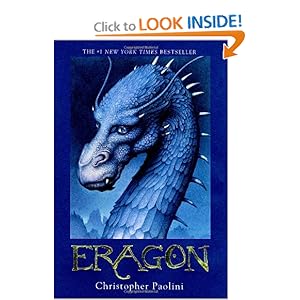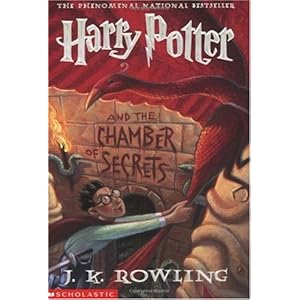Fantasy
A number of conlangers (including the Conlanging Librarian) got their initial exposure to the art of constructing languages from J.R.R. Tolkien's masterwork The Lord of the Rings. These people devoured the Appendices as readily as the story itself. Fantasy, in all of its forms, has been a fertile ground for conlangs ever since (and even before) Tolkien. This list of fiction works should provide readers with seasons of enjoyable (and inspirational) reading.
Beside many items in The Conlanger's Library are links to vendor affiliate sites (Book Depository  and Indie Bound
and Indie Bound  ). The Language Creation Society receives a portion of all the purchases made through these sites. We have removed, at present, links to Amazon.com pages. In the event that Amazon reinstates its affiliate program in California, we will consider re-adding Amazon.com links to the items on these pages.
). The Language Creation Society receives a portion of all the purchases made through these sites. We have removed, at present, links to Amazon.com pages. In the event that Amazon reinstates its affiliate program in California, we will consider re-adding Amazon.com links to the items on these pages.
There is also a WorldCat search link  available to assist readers in locating resources through their local library.
available to assist readers in locating resources through their local library.
Contact The Conlanging Librarian at library -at- conlang -dot- org with suggestions for additions to the library.



 Gael Baudino
Gael Baudino
The Strands series: Strands of Starlight


 , Maze of Moonlight
, Maze of Moonlight

 , Shroud of Shadow
, Shroud of Shadow

 , Strands of Sunlight
, Strands of Sunlight

 , Spires of Spirit
, Spires of Spirit




[Elvish]
 M.C.A. Hogarth
M.C.A. Hogarth
The Kherishdar Series:
The Aphorisms of Kherishdar

 ,
The Admonishments of Kherishdar
,
The Admonishments of Kherishdar

 ,
Black Blossom
,
Black Blossom



[Ai-Naidar]
Hogarth has collected tales of her unique world in these three volumes. Her website and wiki has more of her work as well as a number of pages dedicated to her conlangs and scripts.
 Katharine Kerr
Katharine Kerr
The Deverry Series

 :
:
Deverry Books Proper: Daggerspell, Darkspell, The Bristling Wood, The Dragon Revenant
The Westlands Series: A Time of Exile, A Time of Omens, Days of Blood and Fire, Days of Air and Darkness
The Dragon Mage Series: The Red Wyvern, The Black Raven, The Fire Dragon
The Silver Wyrm Series: The Gold Falcon, The Spirit Stone, The Shadow Isle
[Deverrian, Elvish]
According to Kerr, Deverrian is a P-Celtic language, closely related to Welsh, Breton, and Cornish. The reasons for this are explained in the stories.
 Dennis L. McKiernan
Dennis L. McKiernan
The Mithgar Series (in Mithgarian chronological order)

 :
:
The Dragonstone; Voyage of the Fox Rider; Into the Forge (Hel's Crucible Duology, Book I); Into the Fire (Hel's Crucible Duology, Book II); Dragondoom; The Iron Tower Trilogy; The Silver Call Duology; Eye of the Hunter; Silver Wolf, Black Falcon; City of Jade
[Châkur, Slûk, Sylva, Twyll, Valur]
 Christopher Paolini
Christopher Paolini
The Inheritance Cycle
 : Eragon, Eldest, Brisingr, Inheritance
: Eragon, Eldest, Brisingr, Inheritance
[The Ancient Language, Dwarf, Urgal]
This series evokes strong opinions from conlangers. Although Paolini's languages are not complex and borrow liberally from natural languages, they can provide an introduction to the art for novice conlangers.
 Ricardo Pinto
Ricardo Pinto
The Stone Dance of the Chameleon :
The Chosen
 , The Standing Dead
, The Standing Dead
 , The Third God
, The Third God

[Quya]
The language Quya was created by David Adger for Pinto's books. The books evoke a well-developed world, and, although the conlang does not make a major appearance (except for the Song to the Earth and terms indigenous to the world), it is well worth exploring on Pinto's website which includes text, grammar, and an interesting syllabary.



 Jennifer Roberson
Jennifer Roberson
Chronicles of the Cheysuli: Omnibus Editions (with titles of original novels included): Shapechanger's Song (Shapechanger's Song, Song of Homana); Legacy of the Wolf (Legacy of the Sword, Track of the White Wolf);
Children of the Lion (A Pride of Princes, Daughter of the Lion); The Lion Throne (Flight of the Raven, A Tapestry of Lions)
[Cheysuli, Old Tongue]
 J. K. Rowling
J. K. Rowling
Harry Potter and the Chamber of Secrets




[Parseltongue]
Rowling's playful use of language (including her naming conventions for Wizards and her spells) is evident throughout the Harry Potter series.

 S.M. Stirling and Shirley Meier
S.M. Stirling and Shirley Meier
Saber & Shadow



[Kommanzanu, Fehinnan, etc.]
This book has a good set of language notes. The appendices also detail the sexual mores of the world in which the story is set, including specifics on homosexual, bisexual, and heterosexual practices. The two main female characters are in love. This is a title in the Fifth Millennium series by Sterling, Meier, and Karen Wehrstein. Of these, The Cage



 by Stirling and Meier has a glossary as well.
by Stirling and Meier has a glossary as well.
 J.R.R. Tolkien
J.R.R. Tolkien
The Lord of the Rings



 (The Fellowship of the Ring, The Two Towers, The Return of the King), The Silmarillion
(The Fellowship of the Ring, The Two Towers, The Return of the King), The Silmarillion



 , The Children of Húrin
, The Children of Húrin




[Quenya, Sindarin, Khuzdul, Adûnaic, etc., etc.]
The Shakespeare of conlangs! Tolkien himself stated that he created Middle-earth as a place where his conlangs would be spoken. The languages (and the greeting Elen síla lumenn' omentielvo) predated the stories. Tolkien himself did not like to refer to his masterwork, The Lord of the Rings, as a trilogy: "The (unavoidable) disadvantage of issuing in three parts has been shown in the 'shapelessness' that several readers have found, since that is true if one volume is supposed to stand alone. 'Trilogy,' which is not really accurate, is partly to blame." Tolkien did not even like The Lord of the Rings to be called a "novel": "My work is not a 'novel,' but an 'historic romance' a much older and quite different variety of literature."
 Lawrence Watt-Evans
Lawrence Watt-Evans
The Lords of Dûs



 (includes four novels: The Lure of the Basilisk, The Seven Altars of Dusarra, The Sword of Bheleu, The Book of Silence)
(includes four novels: The Lure of the Basilisk, The Seven Altars of Dusarra, The Sword of Bheleu, The Book of Silence)
[Eramman]
Appendix E includes Notes on Language and Pronunciation.
